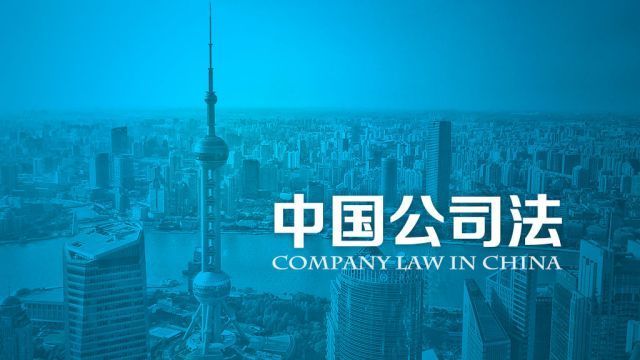课程介绍
(注:本课程为全英文课程)
开设本课程的目的是使外国学生了解中国公司法,从比较法的角度了解和认识中国公司法和西方公司法的区别。外国学生在学习这门课之后能够解决法律问题,进行法律谈判。
公司法是公司法务人员的基础课程,公司法在法务人才的知识体系中占有重要地位。公司法及其相关课程的学习,既是公司法务人员必要的知识储备,也是锻炼其分析和解决问题能力的有效途径,对学生综合素质的提高具有重要价值。
中国公司法课程总体上分为以下几个部分:公司概述、公司的设立与公司人格问题、公司资本制度、公司治理结构、公司的合并与解散、包括公司财务会计、公司债券、法律责任等。
This course aims to help students to correctly appreciate the differences between various business vehicles available in China and to comprehend the rights and duties of different stakeholders in a company. This course also aims to teach students company law and regulations in China in a comparative setting by reference to company law in other jurisdictions, in particular, common law jurisdictions such as England, Hong Kong, and the United States. Furthermore, this course will help students to master the basic norms, doctrines and principles in relation to companies, and to be able to apply them to relevant issues in a more practical manner.
Here are some topics this course may cover: business vehicles and classification of companies; incorporation and formation; corporate personality; promoters and pre-incorporation contracts; corporate charter and constitution; corporate governance; division of corporate powers; fiduciary duties; protection of minority shareholders; bankruptcy and restructuring; corporate social responsibility. This course may arrange small training sessions so that students will have the opportunities to “practice” company law in hypothetical corporate transactions.
课程大纲
Chapter 1 Overview of Company Law
1.1 Structure of Chinese Commercial Law
1.2 Introduction to Company Law
1.3 Comparison between Company Law and FIE Law (Scope)
1.4 Comparison between Company Law and FIE Law (Corporate Structure)
1.5 Nature between Victims and Companies
1.6 Comparison between Company Law and FIE Law (Corporate Finance)
1.7 Corporate Finance (Background Information)
1.8 Comparison between Company Law and FIE Law (Corporate Finance Rules + Incorporation & Tax)
1.9 Corporate Personality
Chapter 2 Founding cases in Modern Company Law
2.1 Founding Cases in Modern Company Law (1) – Salomon Case
2.2 Founding Cases in Modern Company Law (2)
2.3 Founding Cases in Modern Company Law (3) – Macaura Case
2.4 Founding Cases in Modern Company Law (4) – Lee Case
2.5 Shareholders’ Rights v. Property Owners’ Rights (1)
2.6 Shareholders’ Rights v. Property Owners’ Rights (2)
2.7 Comparison between Partnerships and Companies
Chapter 3 Veil-Piercing Doctrine
3.1 Veil-Piercing Doctrine
3.2 Situations of Lifting Corporate Veil in Common Law(1)
3.3 Case Study
3.4 Situations of Lifting Corporate Veil in Common Law(2)
3.5 Situations of Lifting Corporate Veil in Common Law(3)
3.6 Veil-Piercing Doctrine in Chinese Corporate Law (1)
3.7 Veil-Piercing Doctrine in Chinese Corporate Law (2)
3.8 Q & A
Chapter 4 Formation, Classification, and Registration of Companies(1)
4.1 Requirements of Shareholder (1)
4.2 Requirements of Shareholder (2)
4.3 Minimal Capital Contribution (Corporate Financing Rule)
4.4 Articles of Association
4.5 Company Formation
4.6 Corporate Capital
4.7 Corporate Governance
Chapter 4 Formation, Classification, and Registration of Companies(2)
4.8 Business Vehicle
4.9 RO – Formation of a Foreign Representative Office (RO) in China
4.10 RO – Procedure for Formation of a Foreign RO
4.11 RO – Representatives and Employees
4.12 Accounting and Taxation + Post-Registration Matters
Chapter 4 Formation, Classification, and Registration of Companies(3)
4.13 Introduction to Equity Joint Venture (EJV)
4.14 EJV – Regulatory Frame Work + Form^Corporate Structure + Location and Partner + Establishment
4.15 EJV – Preparation of a FSR
4.16 EJV – Capital Contributions and Financing
4.17 EJV – Business Scope + Registered Capital v. Total Investment
4.18 EJV – Governing Law and Dispute Resolution + Corporate Governance Body + Foreign Exchange
4.19 EJV – Land^Land Use Right
Chapter 4 Formation, Classification, and Registration of Companies(4)
4.20 Background of PRC Cooperative Joint Venture (CJV)
4.21 Legal Framework and Forms of CJV
4.22 Accounting and Distributions of Profiles + Management and Operations of CJV
4.23 Comparison between EJVs and CJVs
4.24 Wholly Foreign-owned Enterprises
4.25 Exit Strategic
4.26 Differences between JV and WFOE
4.27 Specific IssuesProvisions
4.28 Some Topics
Chapter 5 Mergers & Acquisitions + Corporate Governance(1)
5.1 Preparation and Strategy of M&A (1)
5.2 Preparation and Strategy of M&A (2)
5.3 Alphabet soup, MOFCOM
5.4 Regulators and Ground Reality
5.5 Agency Problem
5.6 Procedure Side and Substantial Side of Company Law
5.7 Agency Problem of Creditor Shareholders
5.8 Shareholder’s Meeting
5.9 Types of Shareholder’s Meeting
Chapter 5 Corporate Governance(2)
5.10 Illustration-Sichuan Jinlu’s Board Structure Led to Endless Power Struggle
5.11 Powers and Functions of BOD
5.12 Managers
5.13 Negative Qualification of Director, Supervisor and Manager and Their Duties
5.14 Financial and Accounting Systems
5.15 Corporate Dissolution and Liquidation
5.16 Negotiation
Chapter 6 M & A in Practice(1)
6.1 Important Milestone of M&A Transactions
6.2 Dealing With Some Special Problems in M&A
6.3 Due Diligence + Instructions to Legal Risks + Anti-trust Failing + National Security Review of M&A
6.4 Some Interaction Questions
6.5 Private Equity and “China Myth”
6.6 Private Equity Financing
Chapter 7 M & A in Practice(2)
7.1 Types of Investment, Procedure and Documentation
7.2 Round-trip Investment Model
7.3 A Threat to Director Primacy
7.4 Financing Covenants
7.5 Directors’ Fiduciary Duty to Creditors
7.6 Private Debt and the Missing Lever of Corporate Governance
Chapter 8 M & A in Practice(3)
8.1 German Pattern – The Role of Banks
8.2 Cross – Listing
8.3 Regulatory Dualism
8.4 Levels of Minority Shareholder Protection
8.5 Interest – Groups & Judiciary
8.6 Race to the Top & Race to the Bottom
考核标准
开设本课程的目的是使外国学生了解中国公司法,从比较法的角度了解和认识中国公司法和西方公司法的区别。外国学生在学习这门课之后能够解决法律问题,进行法律谈判。




